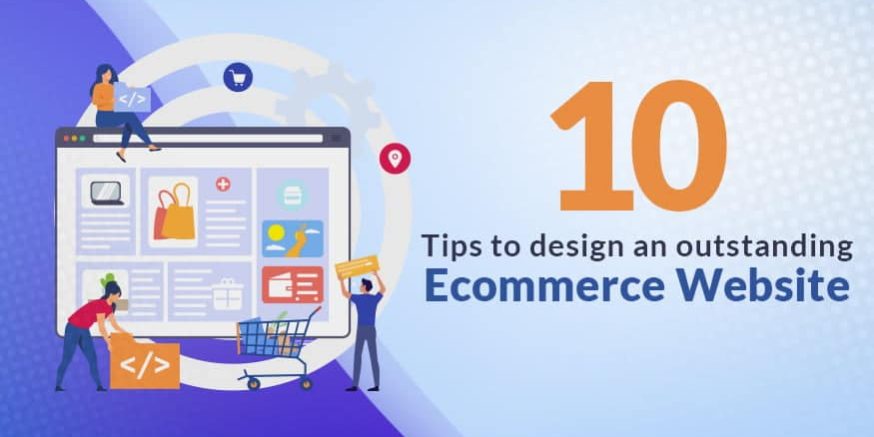 In the digital age, the success of an e-commerce venture hinges on more than just having quality products; it is equally dependent on the design and development of the website itself. A well-designed and meticulously developed e-commerce website can lead to soaring sales and customer engagement, while a lackluster one can result in poor outcomes. Let’s delve into the key factors that make e-commerce websites successful, and conversely, the pitfalls that arise from the absence of quality and certain best practices. Here are the top 10 eCommerce website design success tactics deployed by leading online stores.
In the digital age, the success of an e-commerce venture hinges on more than just having quality products; it is equally dependent on the design and development of the website itself. A well-designed and meticulously developed e-commerce website can lead to soaring sales and customer engagement, while a lackluster one can result in poor outcomes. Let’s delve into the key factors that make e-commerce websites successful, and conversely, the pitfalls that arise from the absence of quality and certain best practices. Here are the top 10 eCommerce website design success tactics deployed by leading online stores.
1. Intuitive User Experience (UX): A user-friendly interface is a linchpin of e-commerce success. Websites that prioritize intuitive navigation, clear product categorization, and easy-to-use filters facilitate seamless shopping experiences. A whopping 88% of online consumers are less likely to return to a site after a poor user experience. Conversely, a study by Baymard Institute revealed that an improved checkout design alone could increase conversion rates by up to 35.26%. This is certainly worth reviewing. This is only the first of the 10 eCommerce website design success tactics. See more below.
2. Mobile Responsiveness: With mobile devices driving a significant portion of online traffic, mobile responsiveness is non-negotiable. A Google study found that 61% of users are unlikely to return to a mobile site they had trouble accessing, while 40% visit a competitor’s site instead. E-commerce websites like ASOS have recognized this trend and invested in mobile-first design to ensure that the shopping experience remains consistent across various devices.
3. Page Loading Speed: Patience is a rare virtue in the digital realm. Slow-loading pages can be catastrophic for e-commerce websites. Data from Google indicates that as page load time goes from one second to three seconds, the probability of bounce increases by 32%. Amazon once reported that a one-second delay could cost the company up to $1.6 billion in sales annually. Thus, optimizing loading speed is not just about user convenience but also directly impacts the bottom line.
4. Visual Appeal and Product Imagery: Humans are visual creatures, and this holds true in the online shopping sphere as well. High-quality product images and engaging visuals significantly influence purchasing decisions. An Adobe survey found that 38% of online shoppers would abandon a website if the images took too long to load. Conversely, brands like Apple excel in this aspect, employing large, high-resolution product images that showcase details and entice customers.
5. Clear Call-to-Action (CTA): Effective CTAs guide users on what action to take next, whether it’s “Add to Cart,” “Buy Now,” or “Learn More.” An eye-tracking study by Nielsen Norman Group revealed that users often scan web pages in an “F”-shaped pattern, paying particular attention to headlines, subheadings, and prominent buttons. By strategically placing and designing CTAs, e-commerce websites can guide user behavior and drive conversions.
6. Trust Signals and Security: In an age of online fraud and data breaches, establishing trust is paramount. E-commerce websites must prominently display security badges, SSL certificates, and clear privacy policies. According to a study by GlobalSign, 77% of consumers are concerned about their data being misused online, and 48% have abandoned online purchases due to security concerns8. Implementing trust signals can assuage these concerns and foster confidence among customers.
7. Seamless Checkout Process: A complicated or drawn-out checkout process is a prime contributor to cart abandonment. The Baymard Institute estimates that the average documented online shopping cart abandonment rate stands at a staggering 69.80%. Streamlining the checkout process by minimizing the number of steps and offering guest checkout options can significantly improve conversion rates. Amazon’s patented one-click checkout is a prime example of this principle in action.
8. Search Functionality: Robust search functionality is akin to a digital shop assistant, helping customers find products quickly. Research by eConsultancy found that 30% of users would abandon a purchase if they couldn’t find the product they were looking for quickly. Implementing an intelligent search engine and employing features like auto-suggestions and filters can enhance the user experience and reduce bounce rates.
9. Reviews and Social Proof: Online shoppers often seek validation from fellow consumers before making purchasing decisions. According to a study by BrightLocal, 88% of consumers trust online reviews as much as personal recommendations. E-commerce websites that showcase customer reviews and ratings provide potential buyers with the social proof they seek, thereby enhancing credibility.
10. Regular Maintenance and Updates: The digital landscape is constantly evolving, and e-commerce websites must evolve with it. Regular maintenance, updates, and bug fixes are imperative to ensure optimal performance and security. Outdated websites with broken links or outdated functionalities are likely to drive users away, impacting sales and credibility.
The design and development of e-commerce websites wield immense influence over their success or failure. A harmonious blend of intuitive user experiences, mobile responsiveness, speedy loading times, compelling visuals, and strategic CTAs can create a recipe for high conversion rates and customer satisfaction. Conversely, neglecting these factors can lead to poor user experiences, high bounce rates, and cart abandonment, resulting in missed sales opportunities. As the e-commerce landscape continues to flourish, brands must recognize that investing in the design and development of their online platforms is a fundamental necessity rather than a mere luxury. Want to generate more sales online? Talk to experts about your website and online store. These 10 eCommerce website design success tactics are a good place to start. If you require more assistance, talk to an expert about your website and retail business. Professional eCommerce website design services are available.








